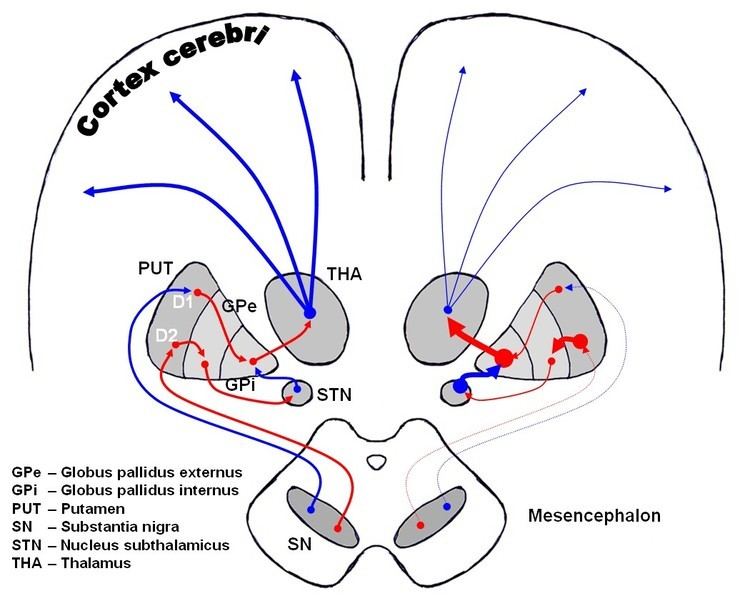 | ||
The pallidothalamic tracts (or pallidothalamic connections) are a part of the basal ganglia. They provide connectivity between the globus pallidus and the thalamus, primarily the ventral anterior nucleus and the ventral lateral nucleus.
Anatomy
They are composed of the ansa lenticularis, the lenticular fasciculus (field H2 of Forel), and the thalamic fasciculus (field H1 of Forel).
References
Pallidothalamic tracts Wikipedia(Text) CC BY-SA
